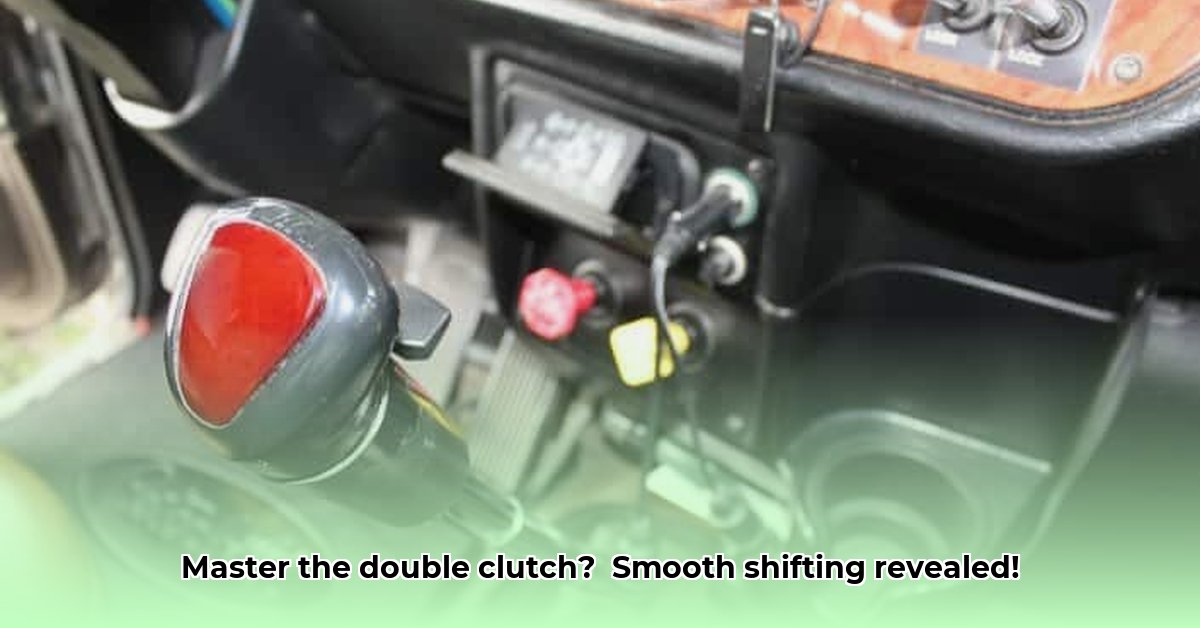
Smoothly shifting gears in a big rig is crucial for safety, fuel efficiency, and extending the life of your transmission. While modern trucks often feature synchronized transmissions minimizing the need, mastering double clutching remains a valuable skill, especially in older models or demanding situations. This guide provides a step-by-step approach to mastering this technique. For more detailed information, check out this comprehensive guide.
Understanding Double Clutching
Double clutching is a technique used to synchronize the engine speed with the transmission speed before shifting gears. This prevents harsh engagement, grinding, and reduces wear and tear on the transmission. Unlike passenger vehicles, the heavy weight and torque of a tractor-trailer require a more controlled shifting process. Double clutching provides this control. It's a skill requiring patience and practice, but the benefits are substantial.
A Step-by-Step Guide to Double Clutching
These steps, when performed smoothly and correctly, will make shifting a much smoother process, benefiting your truck and your driving experience.
Fully Depress the Clutch: Push the clutch pedal all the way to the floor, completely disengaging the engine from the transmission. Ensure the truck is stopped or at a safe speed before beginning.
Shift to Neutral: Move the gearshift lever into the neutral position. This prevents potential grinding during the subsequent steps.
Synchronize Engine RPM: Gradually release the clutch pedal, allowing the engine speed (RPM) to increase. Listen carefully to the engine; you're aiming for the ideal RPM for the next gear (see the RPM table below for approximate ranges). This "rev-matching" is critical for a smooth shift. This step takes practice.
Re-depress the Clutch: Once you've reached the target RPM, fully depress the clutch pedal again.
Select the Desired Gear: Smoothly engage the next gear while the clutch is depressed.
Slowly Release the Clutch: Gradually release the clutch pedal to engage the gear smoothly. Avoid sudden releases to prevent jarring the drivetrain.
Troubleshooting Common Issues
Even with practice, issues can arise. Here's how to address common problems:
Engine Stalling: This often indicates insufficient engine RPM before shifting. Practice finding the optimal RPM for each gear.
Gear Grinding: Grinding usually signifies incomplete clutch depression or rushing the gear selection. Ensure the clutch is fully depressed before shifting.
Rough Shifting: Jerky shifts result from releasing the clutch too abruptly. Practice smooth and controlled clutch release.
Advanced Techniques: Floating Gears (Use with Extreme Caution!)
Floating gears is an advanced technique where the transmission is briefly disconnected between shifts without fully depressing the clutch. This is risky and only recommended for very experienced drivers with extensive practice. It increases the risk of transmission damage and should be avoided, especially in vehicles under warranty. It is far preferable to master the standard double clutching technique before even considering advanced techniques.
Example RPM Ranges for Gear Shifting
The following RPM ranges are approximate and vary depending on the truck's engine, load, and terrain. You must find the optimal RPM for your specific truck through practice.
| Gear | Approximate RPM Range (Example) |
|---|---|
| 1st | 1000-1500 RPM |
| 2nd | 1200-1800 RPM |
| 3rd | 1400-2000 RPM |
| 4th | 1600-2200 RPM |
| 5th | 1800-2400 RPM |
Practice and Refinement
Mastering double clutching takes dedicated practice. Start on a level surface and gradually increase speed and complexity as your skills improve. Adapt your technique based on your truck, load, and terrain. Remember that consistency and smoothness are key to this technique.
Safety Considerations
Smooth gear changes contribute to safer driving, especially when hauling heavy loads. Avoiding harsh shifts and maintaining control prevents sudden jolts and enhances overall safety.
Conclusion
Double clutching, while not always necessary in modern trucks, is a valuable skill that enhances your driving control and extends the lifespan of your vehicle's components. While advanced techniques exist, prioritize mastering the fundamental steps described above for a safer and more efficient driving experience. Regular practice is key to perfecting this invaluable skill.